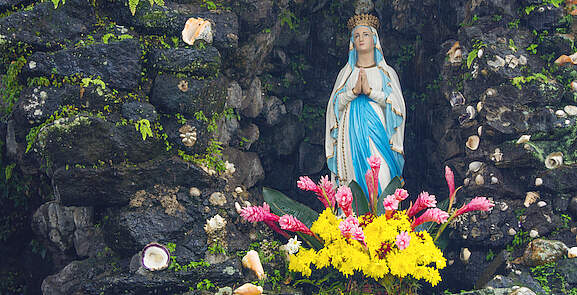
Father Renaud Saliba, rector of the shrine of Pontmain (diocese of Laval, Mayenne department in western France), where there was a Marian apparition in 1871, explains the meaning of the month of Mary:
It is difficult to say precisely why the month of May is associated with the Virgin Mary. May does not traditionally have a major Marian feast like August or December. It is only since the liturgical reform of 1969 that the Visitation is celebrated on May 31. But the reason for choosing May has probably less to do with the liturgical cycle than the cycle of seasons. In Europe, May is the month of flowers, the time of year when spring manifests itself in all its vitality.
In 13th century, the king of Castile (Spain) Alfonso X the Wise (1221-1284) wrote a poem in which he compared the beauty of Mary with that of May. In the 14th century, the Dominican friar Henri Suso (1295-1366) began a tradition of placing flower wreaths on statues of Mary on May 1st. As we can see, there is certainly a link between the beauty of the new May blossoms and our heavenly Mother, the beautiful Lady, as she is called here in Pontmain.
It was in Rome that the custom of increasing prayers to Mary throughout the 31 days of May was born, at the end of the 16th century. St. Philip Neri (1515-1595), for example, gathered children before the altar of the Blessed Virgin in the Chiesa Nuova. He asked them to offer the Mother of God spring flowers, symbols of the Christian virtues that should also blossom in their own Christian lives.
The month of Mary is therefore, from the beginning, not only a beautiful devotion towards the Virgin Mary but also a commitment to grow in holiness each day. In the 17th and 18th centuries, the Jesuits worked hard to spread this devotion throughout Italy. They recommended that on the eve of May 1st, an altar to Mary, decorated with flowers and lights, be set up in every home. The family was invited to pray together in honor of the Blessed Virgin and to draw a strip of paper indicating the virtue to be practiced the next day. After Pope Pius VII (1742-1823) approved this devotion in 1815, it spread to the universal Church.